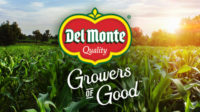The USDA has estimated the amount of food loss in the United States at $161 billion, based on a 2010 study. Statistics vary, but about 30% of produce harvested is wasted, with roughly 12% preventable pre-consumer food loss directly impacting profitability and sustainability. In addition to the direct cost of product loss, there are also substantial indirect costs of the associated labor, water and fertilizer use, logistics and transportation. Much of this waste is concentrated in the fresh fruit and vegetables sector, where the lack of quality consistency is a primary food loss driver and a significant consumer concern.
Food waste is so problematic that it initiated a statement from agriculture secretary Tom Vilasick and EPA deputy administrator Stan Meiburg in 2015 to announce the nation’s first-ever national food loss and waste goal, calling for a 50% reduction by 2030 as an initiative for governments, charitable/faith-based organizations and the private sector. Food loss by the FDA is defined as the edible amount of food post-harvest that is available for human consumption but is not consumed for any reason. It includes cooking loss and natural shrinkage (for example, moisture loss), loss from mold, pests or inadequate climate control and food waste. The U.S. Food Waste Challenge calls on entities across the food chain – farms, agricultural processors, food manufacturers, grocery stores, restaurants, universities, schools and local governments – to contribute in solving this problem.
As consumers have grown to expect fresh fruit and vegetables throughout the year, the supply chain has extended to where the produce shelf life is at its limit when delivered to retailers from distant growers. This extended supply chain places a premium on quality consistency, as delivered freshness – often seven or more days away from the grower fields – is critical to maintaining product availability and meeting consumer demand. Further, as weather conditions become more variable, availability can be constrained in any season, putting further pressure on delivered freshness.
These market conditions emphasize the need for a solution that ensures quality consistency to maximize the delivered yield of produce – for the consumer and business, as well as the environment. While some solutions may shorten delivery time-to-market, improve in-store handling or promise to extend product shelf life, they will be ineffective without initial quality consistency. As such, those food chain entities must seek out a freshness management solution that empowers associates to maintain quality consistency while further ensuring the delivery of fresh products.
There are solutions that utilize data monitoring of the product at the pallet level, while also providing real-time alerts and corrective actions for the product not meeting user-defined process targets. Cloud-based analytics are utilized to map the process adherence, as well as to accommodate freshness variations by matching retailer needs with actual supply. All facets combined result in a significant improvement in delivered quality consistency that proactively avoids waste and improves sustainability, profitability and customer satisfaction. Clearly, there is much room for improvement within the industry.
In the United States, fresh produce represents more than 10-15% of the typical grocery revenue of an approximately $700 billion business. Worldwide, that number is almost double. Produce sales are expected to grow by 2-3% annually for the foreseeable future. Fresh produce also consistently ranks as one of the Top 3 reasons a consumer selects a grocer, and maintains loyalty to a store, according to the Food Marketing Institute, Arlington, Va. Therefore, maintaining consistent high-quality produce should be a requirement for grocers, as well as a benefit in reducing costs due to waste. Produce freshness management needs a modern solution to address these needs, and our communities and environment need a more sustainable method of fresh food delivery without wasting a third of harvested product.



